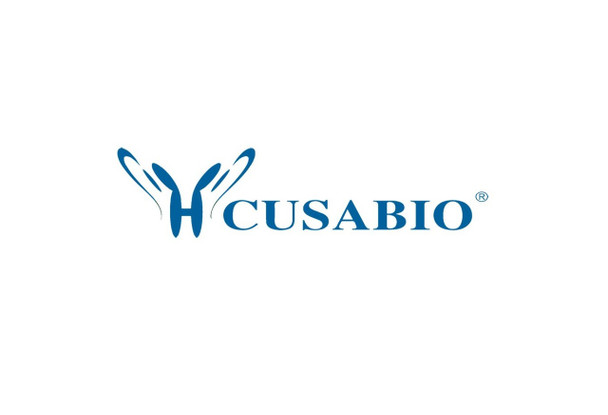Cusabio Active Proteins
Recombinant Human C-C motif chemokine 14 protein (CCL14) (Active) | CSB-AP000571HU
- SKU:
- CSB-AP000571HU
- Availability:
- 5 to 10 Working Days
Description
Recombinant Human C-C motif chemokine 14 protein (CCL14) (Active) | CSB-AP000571HU | Cusabio
Protein Description: Partial
Alternative Name (s) : Chemokine CC-1/CC-3, HCC-11-74 NCC-2, Small-inducible cytokine A14
Gene Names: CCL14,NCC2,SCYA14
Research Areas: Immunology
Species: Homo sapiens (Human)
Source: E.Coli
Tag Info: Tag-Free
Expression Region: 22-93aa
Sequence Info: TESSSRGPYH PSECCFTYTT YKIPRQRIMD YYETNSQCSK PGIVFITKRG HSVCTNPSDK WVQDYIKDMK EN
Biological Activity: Fully biologically active when compared to standard. The biological activity determined by a chemotaxis bioassay using human monocytes is in a concentration of 5.0-20 ng/ml.
MW: 8.4 kDa
Purity: >96% as determined by SDS-PAGE and HPLC.
Endotoxin: Less than 1.0 EU/µg as determined by LAL method.
Relevance: Has weak activities on human monocytes and acts via receptors that also recognize MIP-1 alpha. It induced intracellular Ca (2+) changes and enzyme release, but no chemotaxis, at concentrations of 100-1,000 nM, and was inactive on T-lymphocytes, neutrophils, and eosinophil leukocytes. Enhances the proliferation of CD34 myeloid progenitor cells. The processed form HCC-1 (9-74) is a chemotactic factor that attracts monocytes eosinophils, and T-cells and is a ligand for CCR1, CCR3 and CCR5. {ECO:0000269|PubMed:11085751}.
PubMed ID: 8551235; 9600961; 10213461; 15489334; 10978165; 11085751; 17691823
Notes: Repeated freezing and thawing is not recommended. Store working aliquots at 4℃ for up to one week.
Function: Has weak activities on human monocytes and acts via receptors that also recognize MIP-1 alpha. It induced intracellular Ca (2+) changes and enzyme release, but no chemotaxis, at concentrations of 100-1,000 nM, and was inactive on T-lymphocytes, neutrophils, and eosinophil leukocytes. Enhances the proliferation of CD34 myeloid progenitor cells. The processed form HCC-1 (9-74) is a chemotactic factor that attracts monocytes eosinophils, and T-cells and is a ligand for CCR1, CCR3 and CCR5.
Involvement in disease:
Subcellular Location: Secreted
Protein Families: Intercrine beta (chemokine CC) family
Tissue Specificity: Expressed constitutively in several normal tissues: spleen, liver, skeletal and heart muscle, gut, and bone marrow, present at high concentrations (1-80 nM) in plasma.
Paythway: Chemokinesignalingpathway
Form: Lyophilized powder
Buffer: Lyophilized from a 0.2 µm filtered PBS, pH 7.4
Reconstitution: We recommend that this vial be briefly centrifuged prior to opening to bring the contents to the bottom. Please reconstitute protein in deionized sterile water to a concentration of 0.1-1.0 mg/mL.We recommend to add 5-50% of glycerol (final concentration) and aliquot for long-term storage at -20℃/-80℃. Our default final concentration of glycerol is 50%. Customers could use it as reference.
Uniprot ID: Q16627
Uniprot Entry Name: CCL14_HUMAN
HGNC Database Link: HGNC
UniGene Database Link: UniGene
KEGG Database Link: KEGG
STRING Database Link: N/A
OMIM Database Link: OMIM









